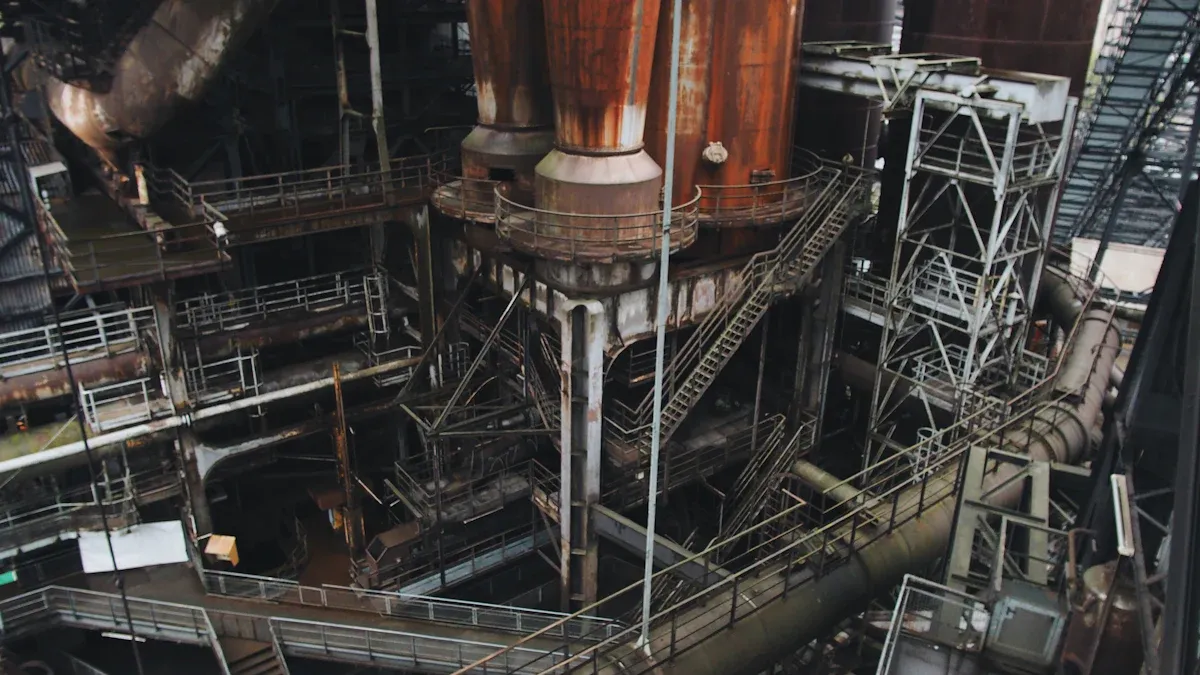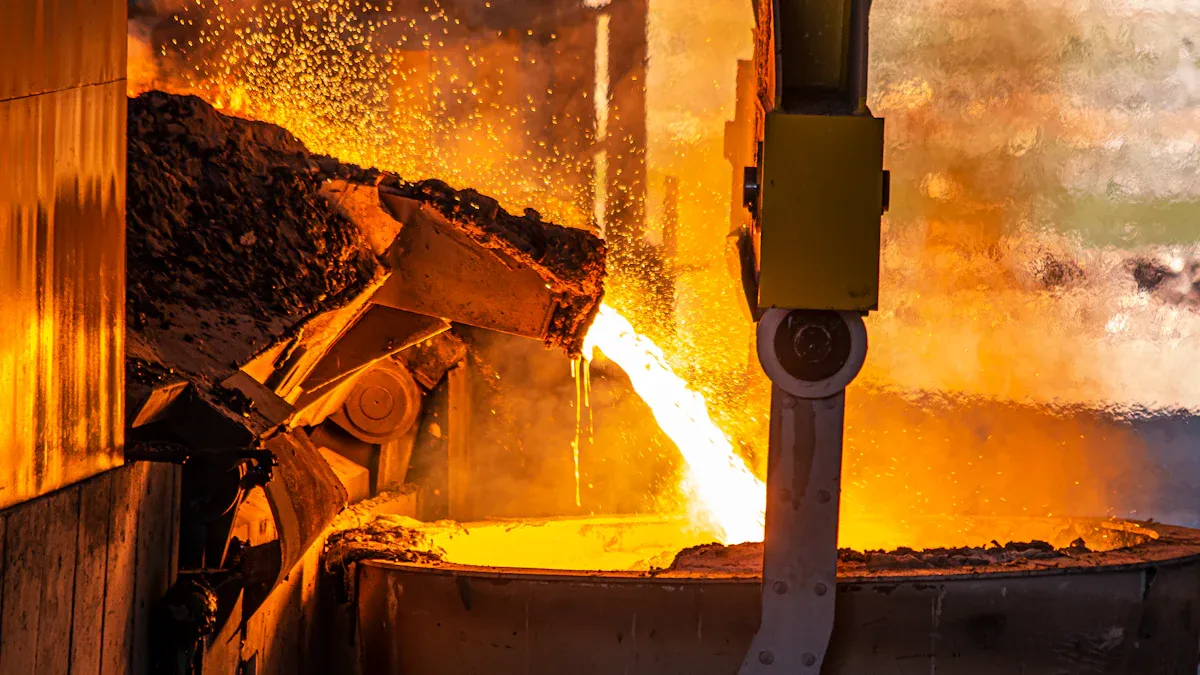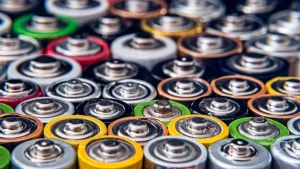
Solar silicon ingot manufacturing faces several persistent challenges:
- Carbon contamination from furnace components increases defects in the silicon melt.
- SiC particle precipitation reduces solar cell efficiency and causes mechanical issues.
- Complex temperature gradients make it difficult to control crystal growth.
Silicon Carbide Furnace Tubes help minimize these problems by improving gas flow and thermal stability.
Key Takeaways
- Silicon carbide furnace tubes improve solar silicon ingot quality by reducing contamination and defects, leading to higher solar cell efficiency.
- These tubes offer superior durability and thermal stability, lasting much longer than traditional metal tubes and reducing maintenance needs.
- Using silicon carbide tubes supports energy savings and sustainability by enhancing furnace efficiency and lowering waste and emissions.
Silicon Carbide Furnace Tubes in Solar Silicon Ingot Processing

Material Properties and Performance Advantages
Silicon Carbide Furnace Tubes offer several advantages for solar silicon ingot processing. Their unique properties make them ideal for high-temperature environments.
- High thermal conductivity enables efficient heat transfer.
- Excellent thermal shock resistance allows the tubes to withstand rapid heating and cooling cycles.
- Superior chemical inertness protects against acids, alkalis, and oxidizing agents.
- Long service life ensures durability during extended operations.
Ningbo VET Energy Technology Co., Ltd manufactures these tubes with advanced techniques, ensuring consistent quality and reliability. Their products help solar manufacturers achieve stable performance and reduce downtime.
Role in High-Temperature Crystal Growth Environments
Solar silicon ingot production requires precise control at high temperatures. Silicon Carbide Furnace Tubes maintain structural integrity during crystal growth. SiC coatings on carbon fibers enhance oxidation resistance and prevent cracks. These coatings also preserve thermal insulation, which is critical for uniform crystal formation. Studies show that ceramics like SiC and TiC reduce contamination and improve the minority carrier lifetime in silicon ingots. This improvement leads to higher solar cell efficiency and better product quality.
Comparison with Traditional Furnace Tube Materials
| Aspect | Silicon Carbide (SiC) Tubes | Traditional Furnace Tubes (Metal/Steel) |
|---|---|---|
| Maximum Operating Temp | Up to 1650°C | Around 1000°C |
| Wear Resistance | 5 to 30 times higher than carbon steel pipes | Standard wear resistance |
| Corrosion Resistance | Resistant to strong acids, alkalis, hydrofluoric acid | Limited corrosion resistance |
| Service Life | Extended by factors of 5 to 10 or more in abrasive/corrosive environments | Typically about 1 year in harsh conditions |
| Maintenance Requirements | Mainly regular cleaning and careful handling due to chemical inertness and mechanical stability | More frequent maintenance due to wear and corrosion |
| Thermal Shock Resistance | Excellent | Lower tolerance |
Silicon Carbide Furnace Tubes outperform traditional materials in temperature tolerance, wear resistance, and lifespan. Manufacturers like Ningbo VET Energy Technology Co., Ltd provide solutions that reduce maintenance and improve operational efficiency for solar silicon ingot processing.
Impact of Silicon Carbide Furnace Tubes on Ingot Quality and Manufacturing Efficiency

Enhanced Purity and Yield of Solar Silicon Ingots
Manufacturers rely on high-purity silicon ingots to produce efficient solar cells. Silicon Carbide Furnace Tubes help achieve this goal by minimizing contamination during the melting and crystal growth process. Their chemical inertness prevents unwanted reactions with the silicon melt. This property reduces the introduction of impurities such as oxygen and carbon, which can lower the quality of the final ingot.
Ningbo VET Energy Technology Co., Ltd produces furnace tubes that maintain a stable environment inside the furnace. Their products support consistent gas flow and temperature control. As a result, manufacturers see higher yields and fewer defective ingots. Improved purity leads to better electrical performance in solar cells and increases the overall value of the production line.
Consistency and Reduction of Defects in Crystal Growth
Uniform crystal growth is essential for producing reliable solar silicon ingots. Silicon Carbide Furnace Tubes, especially when paired with optimized argon gas flow and pressure, create a more controlled environment. This setup reduces the risk of defects caused by uneven temperatures or impurity transfer.
Tip: A well-designed gas tube, such as a shower head type, can further reduce the back transfer of impurities and improve temperature distribution.
The following table highlights the effects of using silicon carbide furnace tubes and modified gas flow:
| Aspect | Effect of Silicon Carbide Furnace Tubes and Modified Argon Gas Flow |
|---|---|
| Gas Tube Design | Reduces impurity back transfer, controls impurity transport |
| Temperature Distribution | Achieves more uniform temperature in the ingot |
| Melt-Crystal Interface Shape | Slightly convex interface improves crystal growth quality |
| Furnace Pressure Optimization | Around 500 mbar lowers oxygen and carbon concentrations |
| Impurity Concentrations | Reduces oxygen, carbon, and SiC precipitates in ingots |
| Defect Reduction Impact | Lowers defects, improves carrier lifetime, reduces ohmic shunting |
These improvements result in fewer defects, such as boron-oxygen complexes and SiC precipitates. The ingots show longer minority carrier lifetimes, which means better performance in solar applications.
Energy Efficiency, Cost Savings, and Sustainability
Silicon Carbide Furnace Tubes offer several benefits that support energy efficiency and cost savings. Their high hardness and mechanical stability allow them to withstand extreme temperatures up to 1650°C. This durability reduces the need for frequent replacements and lowers maintenance costs.
- High thermal conductivity and thermal shock resistance minimize furnace damage and downtime.
- Chemical inertness and corrosion resistance extend the life of furnace components.
- Wear resistance ensures long-term operational stability, even in harsh environments.
Ningbo VET Energy Technology Co., Ltd designs furnace tubes that help manufacturers maintain stable, high-temperature conditions. This stability leads to less waste and higher yields, which reduces overall production costs.
From an environmental perspective, silicon carbide heating elements convert electrical energy to heat with minimal losses. This efficiency reduces energy consumption and greenhouse gas emissions. The longer lifespan of these tubes also means less material waste and a smaller environmental footprint. However, the manufacturing process for silicon carbide tubes can consume significant resources and energy. Improvements such as using closed vacuum furnaces and combining sintering steps can help reduce emissions and resource use.
Note: Using silicon carbide furnace tubes not only improves product quality but also supports sustainability goals in the solar industry.
Silicon Carbide Furnace Tubes set a new benchmark in solar silicon ingot processing.
- Manufacturers report longer operational lifespans, reduced maintenance, and improved process stability.
- These tubes support energy-efficient, contamination-controlled environments, aligning with the solar industry’s shift toward sustainable, high-throughput production.
- Their adoption positions manufacturers for future-ready solar manufacturing.
FAQ
What makes silicon carbide furnace tubes better for solar silicon ingot processing?
Silicon carbide tubes resist high temperatures and corrosion. They help keep the furnace clean. Manufacturers see fewer defects and longer tube life.
Tip: Choosing silicon carbide can reduce maintenance costs.
How long do silicon carbide furnace tubes usually last?
Most silicon carbide furnace tubes last five to ten times longer than steel tubes. Their durability helps reduce downtime and replacement needs.
Can silicon carbide furnace tubes improve solar cell efficiency?
Yes. These tubes lower contamination in the silicon melt. Cleaner ingots lead to higher solar cell efficiency and better product performance.
- Cleaner process
- Higher yield
- Better efficiency






